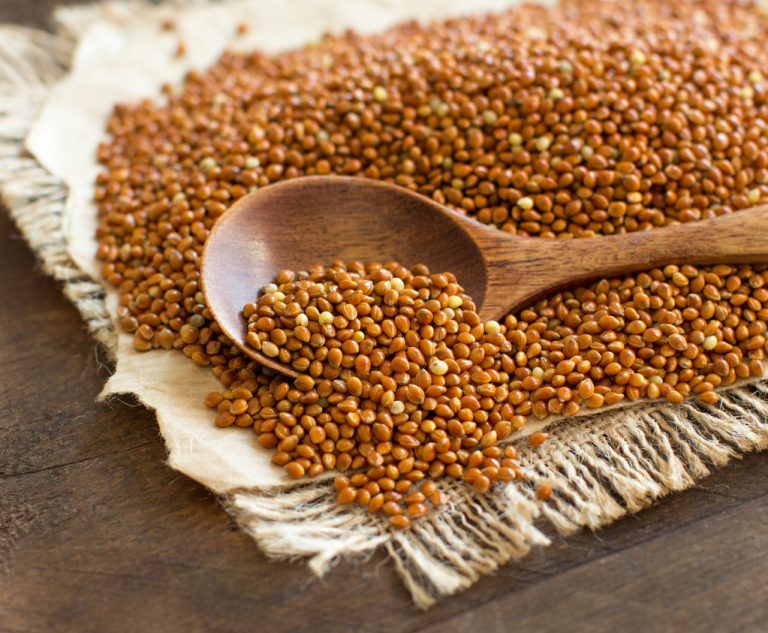Brown millet is still a largely unknown type of grain. In this article you will find out what distinguishes the millet variety and how you use it.

Brown millet: characteristics and ingredients
Brown millet is the red-orange form of the so-called proso millet. Millet has become better known as a healthy grain in recent years: According to the Bavarian consumer advice center, it is rich in minerals and vitamins and contains a particularly large amount of iron, vitamin B6 and silicon. Millet is also gluten-free and therefore also suitable for people with celiac disease.
The better-known golden millet has yellowish seeds. It is peeled before use. Brown millet, on the other hand, is processed with the peel and husk. This preserves important nutrients such as fiber and B vitamins. However, the peeled type of millet is easier to digest and contains fewer pesticides and other problematic substances such as tannins, oxalic acid and phytic acid.
Excessive amounts of these substances in brown millet can have a negative effect on your health: phytic acid impedes the absorption of calcium and iron, among other things. Tannins make protein absorption and starch digestion more difficult. Oxalic acid can also promote the formation of kidney stones, especially in people who already have kidney problems. That doesn’t mean you have to give up brown millet entirely. However, you should consume them in moderation and make sure you eat a balanced diet.
In terms of calories and macronutrient distribution, brown millet does not differ significantly from other types of millet: Govinda organic brown millet, for example, contains around 308 kilocalories per 100 grams. It consists of around 51 percent carbohydrates. About 10 percent is plant-based protein and 4.5 percent is fat. Of these, 3.8 grams are unsaturated fatty acids.
Use and sale of brown millet
You can get brown millet in organic shops and health food stores. Here it is mostly sold in ground form. You can add brown millet flour to muesli, yoghurt and smoothie bowls, for example. You can also stir it into liquids like soups or juices. It is also suitable as an ingredient for bread, cakes and other baked goods. In these cases, however, be careful not to use excessive amounts: brown millet should not be the main ingredient, but only used as a supplement.
You can also sometimes find brown millet as a dietary supplement. Manufacturers advertise the supposedly health-promoting effects of the millet variety. For example, brown millet is said to help against hair loss, nail diseases, arthrosis, tooth decay or osteoporosis.
However, none of these assumptions has been scientifically proven so far, according to the Bavarian consumer advice center. There are also no studies to date on the possible side effects and risks of consuming too much brown millet.

